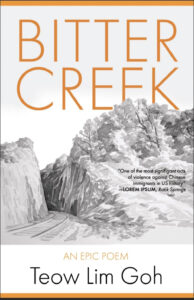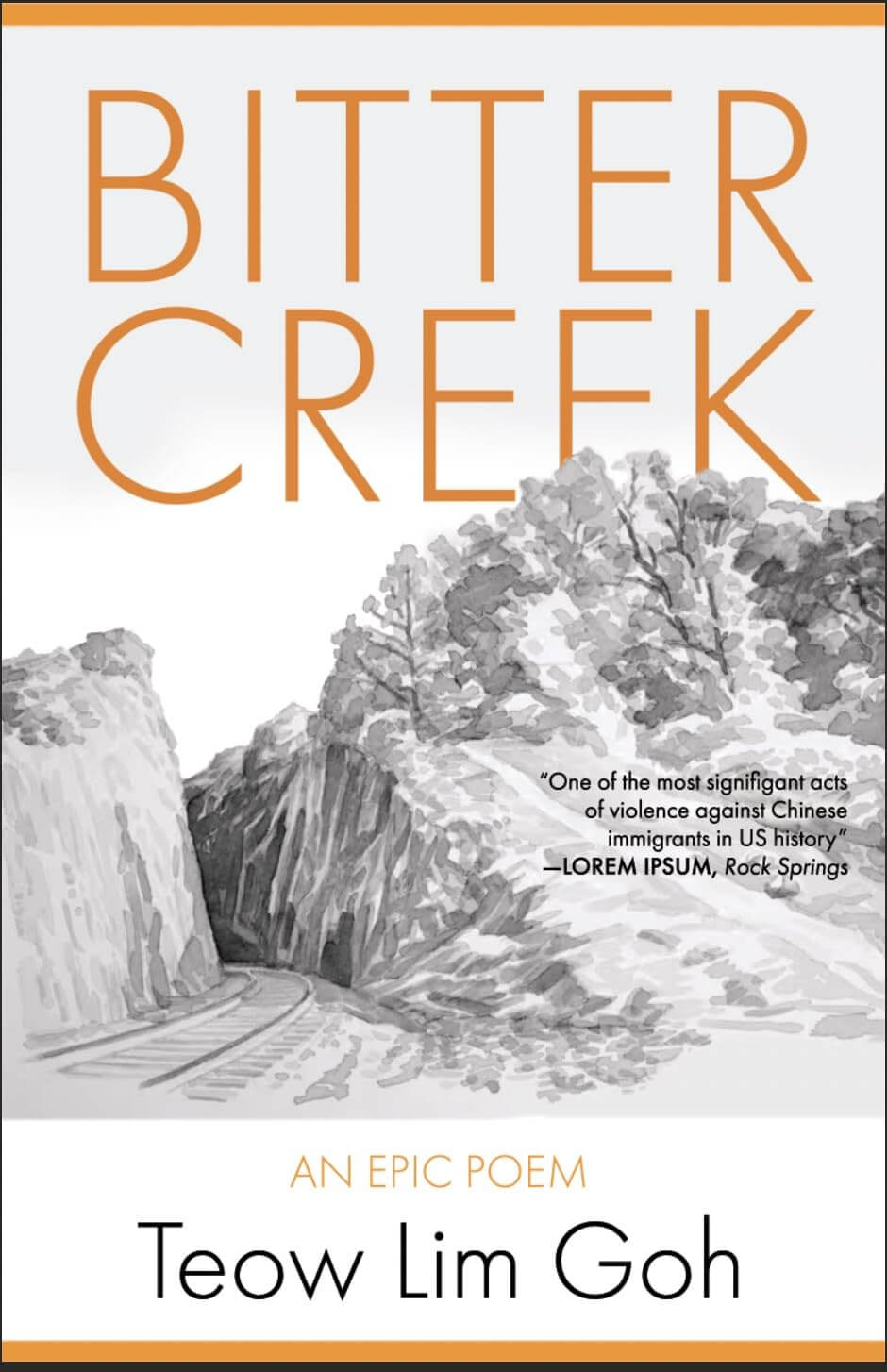Western American history writ large, in verse
Bitter Creek revisits the infamous Rock Springs Massacre in Wyoming, 1855
Bitter Creek revisits the infamous Rock Springs Massacre in Wyoming, 1855
In her epic, book-length poem Bitter Creek, Denver-based poet, essayist and critic Teow Lim Goh brings to life racial conflict from the mid-nineteenth century, when scores of Chinese men were lured to work laying railroad tracks and mining coal and gold in the American West. Attracted by the opportunity to earn exponentially more money than was possible in their homeland, hundreds came to America to do physically arduous, sometimes lethal labor in difficult conditions with an unpredictable ability to return home with money earned. Brought in as strike breakers, the Chinese laborers in Bitter Creek suffered racist exploitation as well as hatred from the workers they replaced.

Teow Lim Goh
Through extensive research, Goh draws on actual historical events and enlivens facts—sometimes previously recorded incorrectly or warped by an abundance of bias—by, as she explains in her notes, aiming “to inhabit the lived experience of this history.” Herein lies her special sauce of palpable empathy. Goh’s imagined connection with her subjects imbues her poetry with compelling sentience.
While not a dialogue, Bitter Creek includes two distinct and opposing points of view—white and Chinese. “Whiskey Saloon” brings us to the Denver of 1873, written from the imagined point of view of a white man explicating the subhuman, bestial nature of immigrants (unintentionally both presaging and echoing Donald Trump and J.D. Vance’s baseless yet oft-repeated and racist claims that Haitian migrants in present-day Springfield, Ohio have been eating people’s pets): “They live like dogs. They even eat dogs.”

Available at bookshop.org or from your local independent bookseller
Meanwhile, the laboring Chinese had their own and opposite point of view, which Goh gives voice to in other sections. “Landlocked,” set in Rock Springs, Wyoming, in November of 1874. describes a Chinese laborer’s day: “All day he swallows / his tears. All day he tries / not to think of the past. He prays.” Another poem, “Letter Home” from San Francisco November 19, 1875 takes on a first-person voice: “I thought I would go home after two years / in California, land of golden peaks / and dreams made on the backs of desperate fools.” Goh’s suffering Chinese subjects are aware that the big picture of America as a beautiful, abundant place involves their own being ruthlessly taken advantage of.
A white woman in Rock Springs, Wyoming, imagined in September 1880, feels as though her personal territory had been invaded: “With the hordes of dirty foreigners— / you just don’t know who they are / and what they are thinking. She feels / like she is living inside a siege.” A couple of months later, November 1880 in San Francisco, another white man tells of “Riots in Chinatown, the streets no longer safe / for the good men and women of the superior race.”
The matter of white supremacy evolved, unattractively, into law by May 6, 1882, when it was officially proclaimed in Washington, DC that “…it shall not be lawful for any Chinese laborer to come, or having so come after said ninety days, to remain in the United States.” Going on to clarify: “That hereafter no State court or court of the United States shall remit all Chinese citizenship; and all laws in conflict with this act are hereby repealed.” The American government’s inability to resolve its conflicting desires for cheap foreign labor and absence of actual foreign people led to unresolvable and, eventually, tragic consequences.
Not many but some Chinese women also made their way to America. “China Mary” in 1883 Evanston, Wyoming, muses: “The white folks think I don’t know / a lot of English but I read / their papers every day, and like them / I suppose I came out here / for second chances. I had to go back / to my old profession—it was all / I knew to do, but at least / I don’t need a madame or man.” Here, Goh conjures a prostitute who possesses an empathic power not unlike her own as a poet. China Mary recognizes that even the men paying her for sex are vulnerable, and are people who have likely lost something they’d like to recover.
A mine overseer prone to run-on, unpunctuated thinking is the subject of “Down in the Shaft,” set in Rock Springs, Wyoming, in July 1885. “The foreman bristles as he hears the laughter / from the next room, miners / talking loudly about the loose women …if / these men were quiet and diligent / like the Chinese focused / on getting the job done rather than finding / ways to slack off and leave early, / they would not have anything to complain / about, and the company / would not need to replace them / with those slant-eyed yellow men who eat / dogs and rats and who knows …” Feeling sorry for himself and unaware of the intelligence and bravery of the Chinese who serve his job’s purposes, the foreman at least recognizes his own white employees’ eagerness to do as little as possible to get as much as possible.
Goh’s poem culminates in the legendary and brutal reality of the Rock Springs Massacre of 1885, in which 28 Chinese miners were slaughtered by white miners who had come to the conclusion their jobs were unjustly taken. The Union Pacific Coal Mines that employed them all never buried the Chinese bodies but left them out, illegally, to be eaten by hogs and dogs.
Goh’s final section, “The Names of the Dead,” is exactly what it says, “[a]s reported by Huang Sih Chuen, Chinese consul to New York.” Names, the method by which the person was killed, along with names, if available, of the person’s remaining family members back home top the list with facts like “Mother, wife, and son at home” or “Parents at home” or “Another son in the mines.” Others just get names, or are mentioned vaguely and solely by bones found in various places. Goh’s kind attempt to remember them is their sole relic.
Click here for more from Sarah Valdez.

